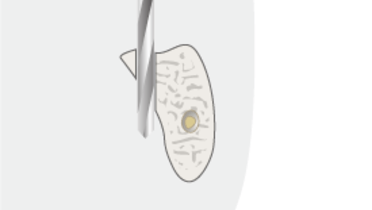-
0
Patient Assessment
- 0.1 Patient demand
- 0.2 Overarching considerations
- 0.3 Local history
- 0.4 Anatomical location
- 0.5 General patient history
-
0.6
Risk assessment & special high risk categories
- 5.1 Risk assessment & special high risk categories
- 5.2 age
- 5.3 Compliance
- 5.4 Smoking
- 5.5 Drug abuse
- 5.6 Recreational drugs and alcohol abuse
- 5.7 Parafunctions
- 5.8 Diabetes
- 5.9 Osteoporosis
- 5.10 Coagulation disorders and anticoagulant therapy
- 5.11 Steroids
- 5.12 Bisphosphonates
- 5.13 BRONJ / ARONJ
- 5.14 Radiotherapy
- 5.15 Risk factors
-
1
Diagnostics
-
1.1
Clinical Assessment
- 0.1 Lip line
- 0.2 Mouth opening
- 0.3 Vertical dimension
- 0.4 Maxillo-mandibular relationship
- 0.5 TMD
- 0.6 Existing prosthesis
- 0.7 Muco-gingival junction
- 0.8 Hyposalivation and Xerostomia
- 1.2 Clinical findings
-
1.3
Clinical diagnostic assessments
- 2.1 Microbiology
- 2.2 Salivary output
-
1.4
Diagnostic imaging
- 3.1 Imaging overview
- 3.2 Intraoral radiographs
- 3.3 Panoramic
- 3.4 CBCT
- 3.5 CT
- 1.5 Diagnostic prosthodontic guides
-
1.1
Clinical Assessment
-
2
Treatment Options
- 2.1 Mucosally-supported
-
2.2
Implant-retained/supported, general
- 1.1 Prosthodontic options overview
- 1.2 Number of implants maxilla and mandible
- 1.3 Time to function
- 1.4 Submerged or non-submerged
- 1.5 Soft tissue management
- 1.6 Hard tissue management, mandible
- 1.7 Hard tissue management, maxilla
- 1.8 Need for grafting
- 1.9 Healed vs fresh extraction socket
- 1.10 Digital treatment planning protocols
- 2.3 Implant prosthetics - removable
-
2.4
Implant prosthetics - fixed
- 2.5 Comprehensive treatment concepts
-
3
Treatment Procedures
-
3.1
Surgical
-
3.2
Removable prosthetics
-
3.3
Fixed prosthetics
-
3.1
Surgical
- 4 Aftercare
Bleeding
Key points
- Any surgical intervention can be followed by bleeding
- Management consists of revision of the suture and compression dressings
- In case of damaged vessels coagulate/stitch vessels. Keep in mind that damage of sublingual arteries can be a fatal complication !
- Consider antibiosis to prevent infection of hematoma
Postoperative bleeding
Possible causes:
Wound dehiscence/adaptation, insufficient suturing, patient unrest or non-compliance, damaged vessel, anticoagulant medication
Management:
Compression of the wound for > 10 minutes, re- and additional suturing, modulate anticoagulant therapy, coagulate/stitch damaged vessel
Warning:
Damage of sublingual arteries can lead to intense hemorrhage. Subsequent elevation of floor of the mouth can lead to (fatal) airway obstruction ! An early symptom of sublingual swelling may be a muffled speech. In such situation ensure free airways (intubation, tracheotomy), revise surgery area with coagulation/closure of sublingual artery (this will be usually a maxillo-facial emergency surgery and imply general anesthesia).
Hematoma, swelling
Check if bleeding occurs, manage bleeding as mentioned above.
Consider antibiosis to prevent hematoma (super-)infection.

